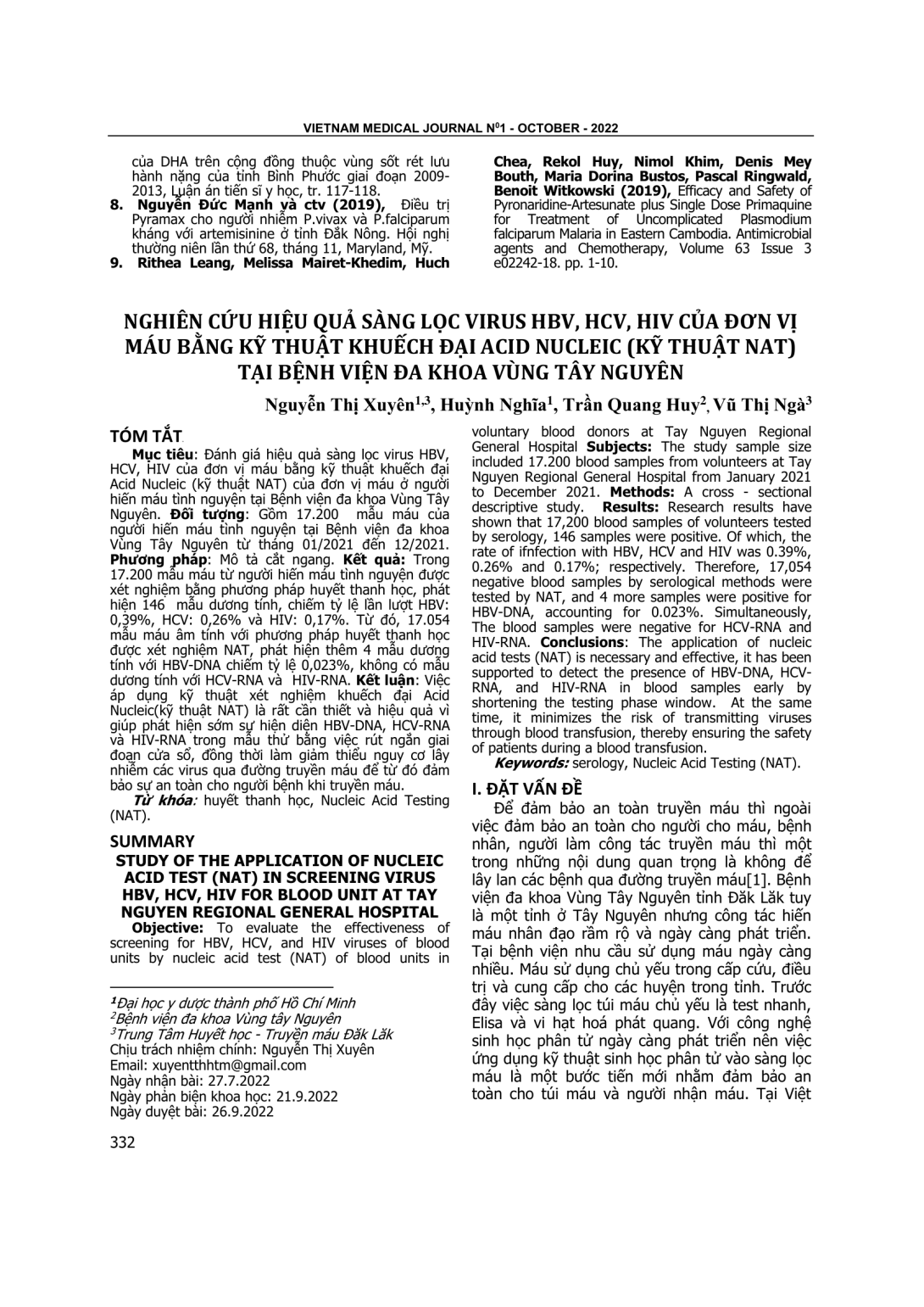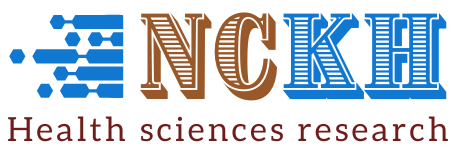
Đánh giá hiệu quả sàng lọc virus HBV, HCV, HIV của đơn vị máu bằng kỹ thuật khuếch đại Acid Nucleic (kỹ thuật NAT) của đơn vị máu ở người hiến máu tình nguyện tại Bệnh viện đa khoa Vùng Tây Nguyên. Đối tượng: Gồm 17.200 mẫu máu của người hiến máu tình nguyện tại Bệnh viện đa khoa Vùng Tây Nguyên từ tháng 01/2021 đến 12/2021. Phương pháp: Mô tả cắt ngang. Kết quả: Trong 17.200 mẫu máu từ người hiến máu tình nguyện được xét nghiệm bằng phương pháp huyết thanh học, phát hiện 146 mẫu dương tính, chiếm tỷ lệ lần lượt HBV: 0,39%, HCV: 0,26% và HIV: 0,17%. Từ đó, 17.054 mẫu máu âm tính với phương pháp huyết thanh học được xét nghiệm NAT, phát hiện thêm 4 mẫu dương tính với HBV-DNA chiếm tỷ lệ 0,023%, không có mẫu dương tính với HCV-RNA và HIV-RNA. Kết luận: Việc áp dụng kỹ thuật xét nghiệm khuếch đại Acid Nucleic(kỹ thuật NAT) là rất cần thiết và hiệu quả vì giúp phát hiện sớm sự hiện diện HBV-DNA, HCV-RNA và HIV-RNA trong mẫu thử bằng việc rút ngắn giai đoạn cửa sổ, đồng thời làm giảm thiểu nguy cơ lây nhiễm các virus qua đường truyền máu để từ đó đảm bảo sự an toàn cho người bệnh khi truyền máu.
To evaluate the effectiveness of screening for HBV, HCV, and HIV viruses of blood units by nucleic acid test (NAT) of blood units in voluntary blood donors at Tay Nguyen Regional General Hospital Subjects: The study sample size included 17.200 blood samples from volunteers at Tay Nguyen Regional General Hospital from January 2021 to December 2021. Methods: A cross - sectional descriptive study. Results: Research results have shown that 17,200 blood samples of volunteers tested by serology, 146 samples were positive. Of which, the rate of ifnfection with HBV, HCV and HIV was 0.39%, 0.26% and 0.17%; respectively. Therefore, 17,054 negative blood samples by serological methods were tested by NAT, and 4 more samples were positive for HBV-DNA, accounting for 0.023%. Simultaneously, The blood samples were negative for HCV-RNA and HIV-RNA. Conclusions: The application of nucleic acid tests (NAT) is necessary and effective, it has been supported to detect the presence of HBV-DNA, HCV- RNA, and HIV-RNA in blood samples early by shortening the testing phase window. At the same time, it minimizes the risk of transmitting viruses through blood transfusion, thereby ensuring the safety of patients during a blood transfusion.
- Đăng nhập để gửi ý kiến
